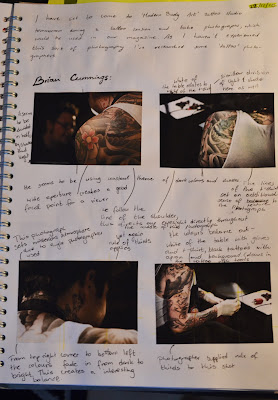According to Oxford dictionary to be original means to create the earliest form of something, from copies can be made. Within contemporary artists not many people are original, many artist take inspiration from some other great work created by someone else in history.
Obviously work cannot be copied by other artists due to the copyright law established in early 17th century, which only applied to books but later in time it applied to other range of works such as arts and music. By taking inspiration, a artist do not copy other’s work, however in many examples we can see clear connections to previous versions of similar art pieces.
Let’s have a look at the photograph created by one of the MPTV photographers of Marilyn Monroe and her famous blowing dress from 1955 film “The Seven Year Itch”.
Since then the idea of fan being used in photography spread more. There is most probably more history for the fan, but this was the first photograph I have seen that someone was using it and this photograph has been “copied” plenty of times.
Looking at other examples we can clearly see the link between one and another. Marilyn Monroe inspired many contemporary photographers. Some even used similar costumes. The pose all these models are using while holding their dresses down, clearly links to Marilyn’s photograph.
This is a contemporary piece by Jason Stitt
This is another work created by the same photographer.
This is work created by unknown photographer, however there is a clear link to Marilyn's photograph, the pose, the costume. The use of the similar looking white dress, makes it look like it is a contemporary remake of the original MPTV photograph.
Lastly I would like to mention that the pose of the Monroe in the photograph inspired the creators of “Betty Boop” to sell the statutes of the famous cartoon character looking similarly to Marilyn Monoroe.
As I said before in the post about the managing creative environment that it is important to be inspired. For me to be creative, means to be inspired.
I took inspiration from many artists before (in my A2 level) like Magritte and Salvador Dali or Jerry Uelsmann, all of them are surrealist artist I have linked all of their work ideas with mine and came across quite interesting results. In my journal for this year of studies I have looked at ways other photographers work in order to gain some ideas of how to create my own work.
 |
| Martin Parr |
 |
| My photograph |
This is a piece I took in response to Martin Parr's photograph. I thought I could improve this photograph by adding some inspiration from other artist. In this case I looked at Uta Barth, who I took inspiration before following my whole project.
 |
| Uta Barth |
Uta Barth uses out of focus photograph to create unconventional pieces of art. I really enjoy looking at her work and therefore I decided to make my above photograph into unconventional piece using technique I learnt by looking at Uta's work.
This is a piece I came out with. Having an idea for the subject inspired by Martin Parr and Style by Uta Barth.



















